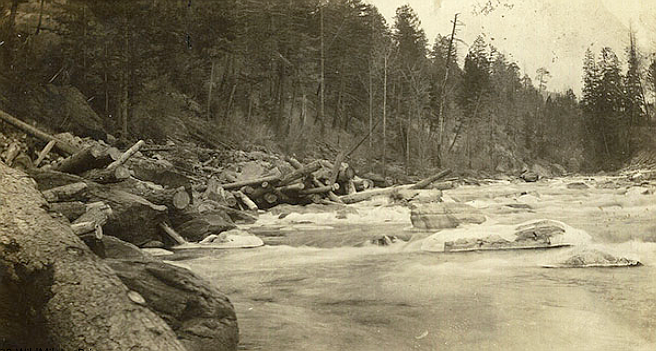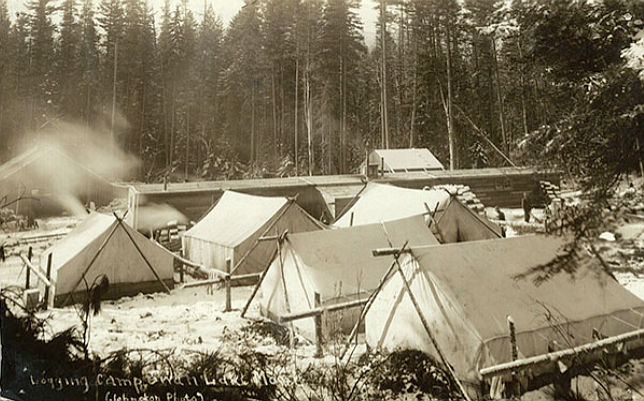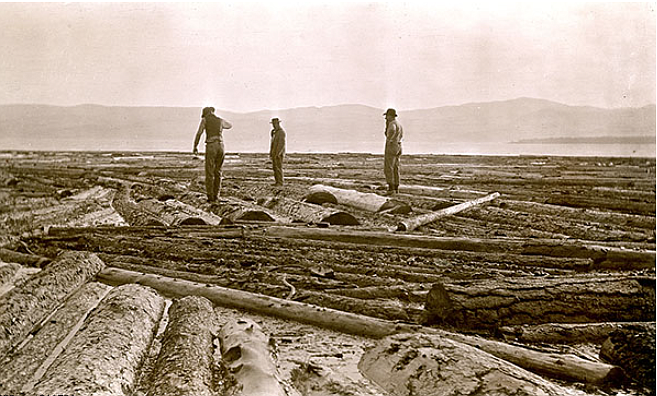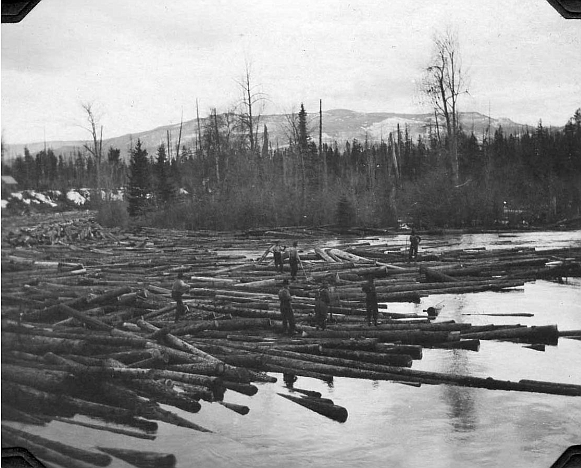River pigs and flames in the forest – part one
“The timber west of the divide must seek a more distant market, as there is not now, and probably never will be, any great local demand.” In 1899, H.B. Ayres, a surveyor for the US Geological Survey wrote these words in a report about much of the land on the western slope of the continental divide encompassing the entire Swan Valley. By 1913, however, the Flathead National Forest, sold over 9,000 acres of timber rights above Swan Lake to the Somers Lumber Company. Logging began almost immediately in October 1914 and continued for nearly five years until July 1919 producing 87 million board feet of sawlogs and 302,000 board feet of railroad ties. But wait, how did all those logs get from Swan Lake, all the way to the Somers sawmill at the northwest corner of Flathead Lake? A railroad, river pigs, and log drives, that’s how.
The company hired James E. Craney to run the harvest operation and given the size of the sale, Craney decided to build an 18-mile railroad and use a 42-ton Shay steam locomotive, steam skidder, and 16 flat cars, to transport the logs down the drainages from where they were harvested, into the waters of Swan Lake. The locomotive, cars, and track were floated on barges from Somers, across Flathead Lake, to Bigfork. Then the steam engine and cars were rolled along a small section of track and gradually "leapfrogged" to Swan Lake and barged to its head. Once they reached the end of the lake, tracks were built up the various drainages.
Horses, and a first of its kind steam engine, were used to skid felled logs out of the woods. Cross-haul teams then decked the logs for loading on to a sleigh during the winter, or a rail car. Once loaded onto the flatcars, or sleighs, the logs would be shuttled down to the head of the lake, and decked along the shore or on the ice, awaiting the arrival of Spring. When weather warmed and the lake began to clear of ice, floating islands of timber were boomed together and towed to the foot of the lake. From here they were swept downstream along the swollen Swan River for 16 miles before slowing in the still water above the diversion dam, where today's "Wild Mile" begins.
From the foot of Swan Lake, around the serpent-like turns of the river, and then over the top of the diversion dam and down to Bigfork Bay, the log drive was in the hands of skilled, death-defying men called "river pigs". It was their job to guide, push, lever, and wrangle massive logs weighing thousands of pounds, while walking from bank to bank over the river surface along slippery spinning cylinders. They were also trying to prevent the logs from sinking as well. And while we all appreciate the wild mile of today, it used to be even wilder. There are a handful of places where, try as they might, the river pigs couldn’t free up the logs. So, something with a little more explosive power had to be used. It is unknow exactly how many times, but more than once, dynamite has helped shape the course of the Swan River.
Once into Bigfork Bay, the logs were lashed back together and floated across the lake to the mill in Somers. The river pigs and log drives on the Swan were short lived and only about 5,700 acres of the 9,000 sold was harvested by July 1919. Later that summer, a lunch fire broke out and proceeded to burn over the entire sale area consuming the rest of the trees that had not been cut. Fire then, as with many of the ecosystems in the world, reared its head early in the history of Bigfork and the surrounding area. A topic we will explore more in-depth next month.













